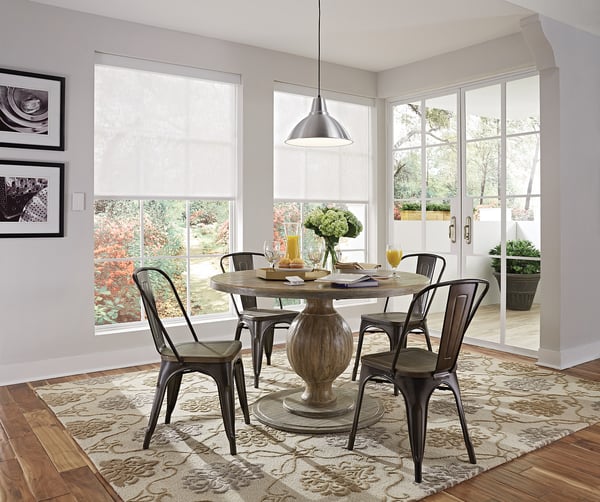Master the Art of Shade Performance: Fabric Choice Matters
by Springboard Automation, on Aug 4, 2023 11:05:42 AM

Choosing window shades for a luxury home isn't merely a matter of matching colors and styles. The fabric's properties significantly influence the overall performance, aesthetics, and functionality of the shades. In this blog post, we'll delve into the critical aspects of fabric choice and their effects on light transmission, glare reduction, visibility, and the overall energy efficiency of a home.
Openness: The Key to Light Control and Privacy
Fabric openness is a measurement of the tightness of a fabric’s weave. It plays a crucial role in the light-controlling capabilities of window shades. It essentially governs the amount of light that the fabric filters into a space. Therefore, it impacts the degree of privacy and connection with the outdoors.
For example, solar shades, which can be precisely woven to let more or less light into a space, rely on this property. A fabric with a tighter weave brings less light into a space, providing more privacy, less visibility, and a cooler interior as more light is reflected away. Conversely, a looser weave allows more light to enter, enhancing the connection with the outdoors but offering less privacy.
The Surprising Influence of Color on Shade Performance
Fabric color also has a significant, though sometimes counterintuitive, impact on shade performance. For instance, while darker fabrics might seem to attract more heat, they have lower visual light transmission (Tv). This means that they reduce glare and improve the connection with the surroundings.
Consider a living room with a skyline view that gets intense afternoon sun. A dark shade here would enable the residents to enjoy their view without experiencing the discomfort of glare or harmful UV absorption. However, a drawback of darker fabric is that it absorbs more light, causing the fabric to get hotter and the shade to be less effective in preventing thermal buildup from the sun on the interior.
On the other hand, lighter colors work best in environments with indirect light where glare reduction is less of a concern. Lighter-colored fabrics reflect more solar radiation, helping maintain indoor temperatures while somewhat reducing visibility.
Dual-sided Fabrics: Best of Both Worlds
Designers looking for versatile solutions may choose dual-sided fabrics, which feature one color on the exterior and another on the interior. This setup helps achieve both effective light reflectivity, to keep the space cool, and a meaningful connection with the outdoors.
For example, a white exterior and a dark gray interior would provide optimal results. The exterior reflects solar radiation, keeping the interior cool in direct sunlight, while the darker interior improves visibility to the outdoors. Many products in various fabric collections offer this dual-sided feature, including a range of twills.
In conclusion, the fabric choice for window shades has far-reaching implications beyond aesthetic appeal. It directly impacts the functionality, energy efficiency, and overall atmosphere of a room. Understanding these nuances is crucial for interior designers and architects to make informed decisions that will meet the needs of their luxury clients.
Ready to elevate your space with the perfect window shades?
Our team of expert system designers is on hand to guide you through the process and even provide sample fabrics for luxury Lutron shades. Whether you're seeking advice on fabric selection or integrating shades into a home automation system, we have the solutions. Contact us today to review your project and learn how we can help transform your vision into reality.
Call us:





